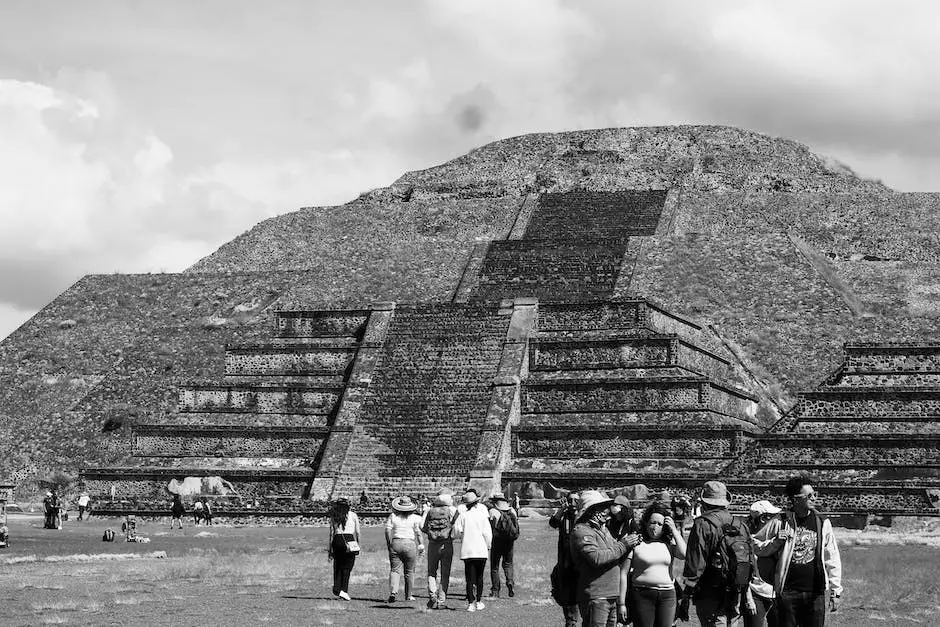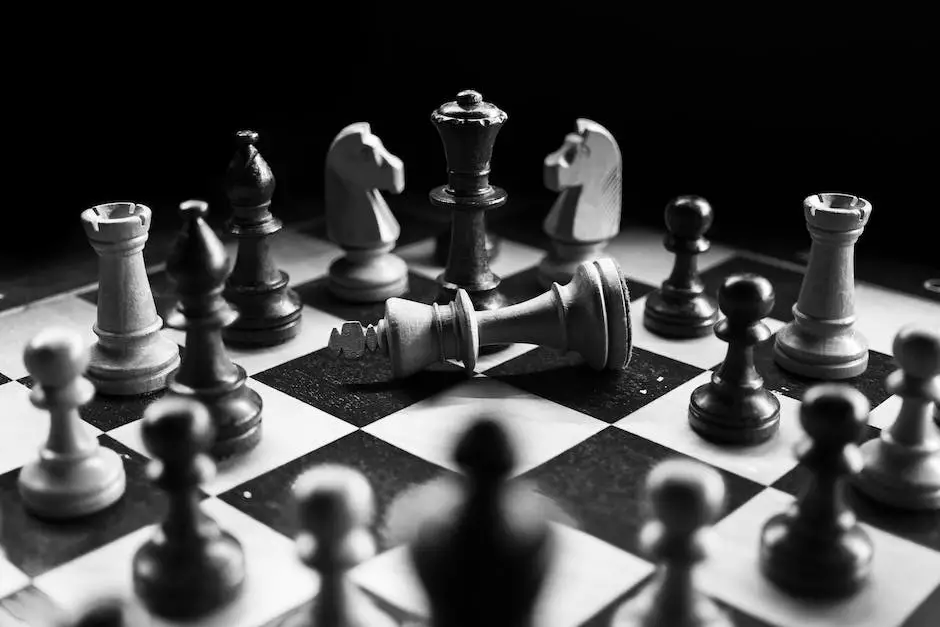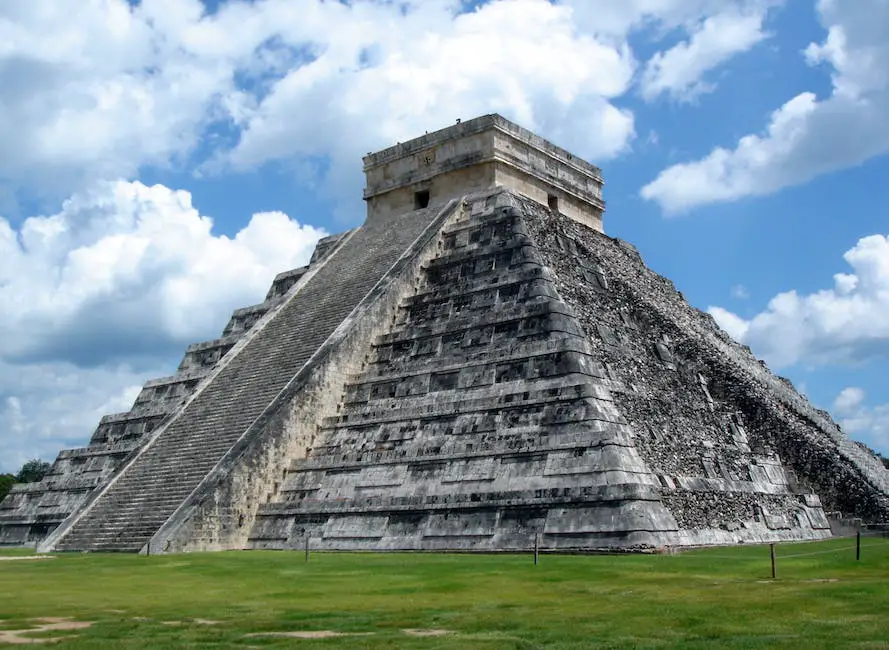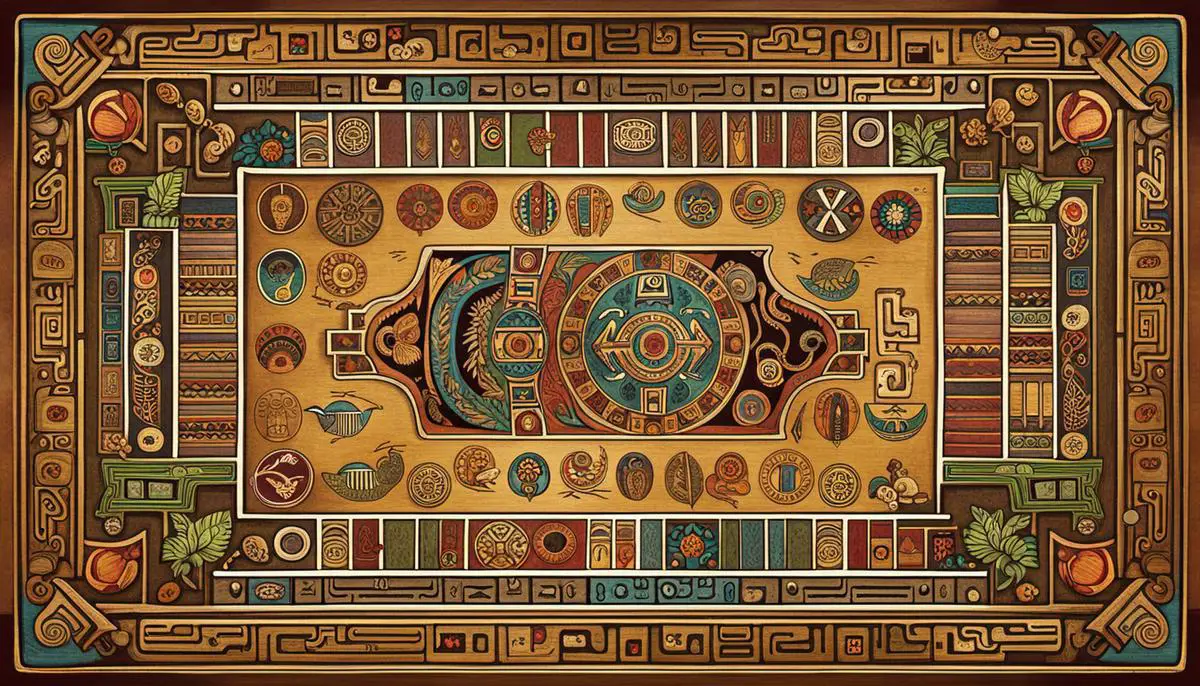In the rich tapestry of human civilization, the intriguing world of ancient Aztec board games presents a fascinating blend of strategy, chance, and cultural representation. Board games emblazoned with the symbolisms of the Aztec cosmos served not just as pastimes for leisure hours, but as catalysts sparking social bonds across the robust Aztec society. These strategic challenges woven with cultural narratives have been illumined throughout history, enlightening our understanding of Aztec social norms, beliefs, artistry, and intellectual prowess. Across this essay, we journey back to pre-Columbian Mesoamerica, reflecting on the development and cultural significance of these board games, demystifying their rule sets, delving into the psychology and strategies behind the gameplay, and investigating the craftsmanship of game materials. Simultaneously, we step into the present, shedding light on the contemporary relevance and adaptations of these ancient games.
History of Aztec Board Games
Origins of Aztec Board Games
The precise origins of ancient Aztec board games are difficult to pinpoint due to their antiquity and limited material evidence. Nonetheless, it’s generally accepted that board games were a significant part of Aztec culture, rooted in the society’s mythology, religious beliefs, and societal norms. Various artifacts, carvings, and couplets in Nahuatl literature allude to their prevalence prior to the Spanish conquest in the 16th century.
Development of Aztec Board Games
The development of these board games was closely interconnected with the Aztecs’ understanding of the cosmos and their ritualistic worldview. Games were often a reflection of life’s battles and hardships, an individual’s or community’s spiritual journey, or the antagonistic forces of nature. Patolli, one of the most known games from the Aztec era, for example, is believed to have mirrored the Mesoamerican view of life as a series of cycles linked to a complex cosmic calendar.
Cultural Significance in Aztec Society
Board games held deep cultural significance in ancient Aztec society. They served not merely as a pastime but were integral to Aztec religious rites and customs, connected with the worship of certain deities, and used for divination purposes. Patolli, for example, was deeply associated with Macuilxochitl, the god of music, dance, games, and gambling. Moreover, they also played a functional role in the socialization process, affirming societal norms and hierarchies, resolving conflicts, promoting alliances, and fostering community relationships.
Social Roles and Interactions
In terms of social interaction, games were often used as a platform for social interaction, cooperation, competition, and even conflict resolution. They were also a means for wagering and, as such, could result in significant changes in social status and wealth. As per the writings of Spanish conquerors, losing players were sometimes reduced to the status of indentured servants, having to repay their debts through years of service.
Diffusion into Other Cultures
These board games did not only remain within the boundaries of the Aztec empire. They diffused into other Mesoamerican cultures (Maya, Mixtec, Zapotec), with some evident cultural adaptations. Further, there are striking similarities between the Aztec game Patolli and the ancient Indian game Parchisi, suggesting possible cultural diffusion, although the direction and means of diffusion remain uncertain. Post-Conquest, these games also found their way into Spanish culture, although the Catholic Church’s disapproval of their gambling aspects saw their usage gradually diminish.
Ancient Aztec Board Games: A Modern Exploration
Many of the games prevalent in ancient Aztec society have unfortunately been lost to the sands of time. However, understanding their profound significance culturally, socially, and historically has sparked a contemporary resurgence of interest in them. Numerous efforts to revive and adapt these Aztec board games are currently underway, both nationally in Mexico and on an international scale. More than just games, they serve as powerful educational tools in today’s world, providing engaging ways to explore and discuss Aztec history, culture and society.

Rules and Objectives of Aztec Board Games
Delving Deeper: Aztec Board Games Patolli and Tlachtli
The rich cultural landscape of the ancient Aztec civilization was punctuated by a variety of games, highlighting their vast diversity. Among these, the board games Patolli and Tlachtli were particularly noteworthy. Each of these games boasted a unique set of rules, objectives, and criteria for victory, all of which paints a colorful picture of Aztec recreational pursuits.
The Game of Patolli
Patolli, a race game, was a popular game with the commoners and nobility alike in the Aztec empire. The game board was shaped like a cross with each arm of the cross consisting of 12 squares and a large end square. The center square intersected by all four arms was the home base. Players rolled five beans, which was marked on one side, and moved their pieces based on the number of beans that landed marked side up.
The objective of the game was to move one’s pieces around the board and have them land back into the home base. Each player had six pieces each, which they placed alternatively in their respective home bases. If a player landed on a square occupied by their opponent’s piece, the opponent’s piece was sent back to start.
The winner was the player who first managed to get all their pieces around the board and back into their base. Bets were often placed on this game, with players wagering items on the outcome.
The Game of Tlachtli
While not typically considered a traditional board game, Tlachtli was an Aztec ball game that used a rubber ball and a specially prepared court that was a blend of sport and ritual, considered so important that a losing player could face a beheading!
The court was shaped like an ‘I’ and at the sides of the playing field, high stone rings were attached to the walls of the ball court – the aim of the game was to put a rubber ball through these rings, but without using your hands or your feet.
Typically played by two to four players, the game was won by the team or player who passed the ball through the stone rings of the opposing team or by keeping the ball in play longer. Scores were accumulated over several rounds to determine an overall winner.
Aztec Board Games: Gameplay Strategies
Strategizing can be key in Aztec board games like Patolli and Tlachtli. In Patolli, the prime objective is to get all your pieces safely back to the base ahead of your adversary. As part of your strategy, you could opt to block the movement of your opponent’s pieces or even sacrifice one of your own to set back one of theirs.
Alternatively, while playing Tlachtli, you might leverage body movements, leanings, and dives to both maintain the ball’s momentum and obstruct the rival team. It is crucial to aim for the stone rings to score, with the trajectory of the game and teamwork being of utmost importance.
Note that mastering these games is not just about physical skill and strategizing. The element of luck, especially in Patolli, where the fate of the game often hangs on a bean roll, is equally crucial. With their deep bearings on Aztec cultural and religious life, these games transcended the realm of mere entertainment.

Technical Analysis of Aztec Board Games
A Deep Dive into Ancient Aztec Board Games: A Mix of Strategy, Skill, and Fortune
Ancient Aztec board games like Patolli and Ullamaliztli intrigued players with their unique blend of strategy, skill, and chance. Players were expected to make shrewd tactical decisions based on the positioning of their game pieces, the countermoves of their opponents, and to an extent, fortune as decided by the throw of dice or beans.
Decoding Stratagems for Playing Patolli
Patolli, a cross and circle game, was deeply steeped in mathematics and probability. The game was based on the number 52, significant in the Aztec Calendar and cosmology. It involved each player having six markers which they had to move from one end of the cross to another via a calculated sequence of dice rolls.
Unique strategies could include optimum positioning of markers, making effective use of good dice throws, and timely blocking of opponents. The element of chance, introduced with the roll of the dice, influenced players’ decisions. Understanding the mathematical probability of various outcomes could guide those decisions.
Psychology Behind Gameplay in Ullamaliztli
Ullamaliztli, an Aztec ball game, included not only physical activity but also high levels of strategic thinking and psychological tactics. Teams of players needed to move a heavy rubber ball into their opponents’ field using only their hips, knees or elbows. Devising tactical psychological defenses, like distracting opponent movements or misleading gestures, could be as crucial as actual physical plays.
Mathematical Logic & Decision Making in Ancient Aztec Board Games
Aztec board games were often intertwined with the culture’s numerology and cosmology, enhancing their strategic depth. In Patolli, for example, players had to decide whether to cluster their tokens for a defensive approach or to space them out for an aggressive run to the finish line. These decisions were directly influenced by understanding the mathematical outcomes of their choices.
Probability & Chance: Unpredictable Variables in Game Outcomes
Lastly, the role of probability and chance was deeply engrained in Aztec board games. Factors like the roll of dice in Patolli or the unpredictable ricochets of the ball in Ullamaliztli added an element of uncertainty. This randomness contributed to the games being an analogy for life events, where despite best laid strategies, fate could alter the outcomes.
Delving into the study and comprehension of ancient Aztec board games can unveil the intriguing depths of strategic planning, logical problem-solving, and psychological insight demonstrated by their players. Furthermore, these games held a profound cultural significance that stood as a testament to the rich heritage of the Aztec society.

Materials and Construction of Aztec Board Games
A Glimpse into the Raw Materials of Aztec Board Games
The Aztecs traditionally crafted their board games using resources that were readily available, such as stone, wood, clay, and even bone on occasion. Carved pieces were often made of stone, obsidian in particular, allowing for intricate designs and impressive durability. However, due to the weight of such materials, they were primarily used for fixed location games.
Another common material was wood, procured specifically from hardwood trees, valued for its tough quality and ability to accommodate detailed carvings. Clay pieces painted with vibrant shades of colorful pigments showcased another dimension of their artistic prowess.
The game boards themselves generally consisted of flat wooden slabs or rectangular pieces of cloth dotted with holes or grids. The boards were frequently paired with either obsidian cast pieces or carved clay. Sometimes, the Aztec’s love for textiles shone through their games, incorporating a woven or embroidered game board adorned with symbolic patterns.
Craftsmanship in Aztec Board Games
The creation of these games showcased the meticulous craftsmanship of the Aztecs. Carving intricate symbols and shapes into wood, stone, or bone required not only skill but also knowledge of particular designs related to Aztec societal and religious beliefs. Likewise, creating clay pieces or designing textiles presented a canvas for vibrant Aztec art.
Game pieces were typically formed to represent Aztec deities, important cultural symbols, or were imbued with symbolic meaning related to cosmology, astronomy, and myth. Symbolism embedded within the complexity of the game board and pieces greatly influenced the gameplay and underlying rules, often reflecting real-life encounters or Aztec worldview.
Replicas of Ancient Aztec Board Games
Replicas of these ancient games can be handmade for a more authentic feel or bought from specialized creators. If you’re seeking to create your own, careful research is essential to understand the symbolism and ensure the accuracy of your work. Purchasing replicas, however, is a more accessible option for most. Several craft vendors and historical supplies stores will have these, offering a variety of games and materials.
Alternatively, 3D printing presents an increasingly popular method for creating replicas. This requires a digital model that can be downloaded or created with computer software, which can then be printed out using a variety of materials. While this doesn’t offer the same traditional crafting experience, it allows for a high level of detail and durability, while being very customizable.
Considerations for Accurate Replicas
When attempting to replicate these games, it’s essential to determine the exact materials used, the specific symbolism, and the design’s complexity. Many of these games have specific rules and symbolism that need to be accurately represented. If accurate replication is impossible due to availability or cost of materials, consider using modern equivalents that can achieve a similar effect.
Description: The image showcases a replica of an ancient Aztec board game, demonstrating the intricate carvings of the stone pieces and symbolic designs etched into the wooden board. This image signifies the artistry and historical importance of board games within the Aztec civilization.
Reviving and Modern Adaptations of Aztec Board Games
The Resurgence of Ancient Aztec Board Games
Regarded for their prosperous culture and tactical warfare, the Ancient Aztecs had a variety of board games that mirrored these aspects of their society. Recently, we’ve seen a burgeoning interest in rediscovering and understanding these games, giving insightful perspectives into the Aztec culture. Scholars, hobbyists, and institutions alike are making earnest efforts to unravel the rules and gameplay, as well as interpreting their societal significance.
Take for example, Patolli—a game that embodies a blend of strategy and chance, held in high esteem by the Aztecs. Patolli is not just a game for amusement, but a cultural artifact that breathes life into the ancient Aztec civilization. The game has seen a renaissance in schools, cultural events, and board game leagues across the globe.
Another noteworthy game is Ullamaliztli, also known as the Mesoamerican ballgame. Although primarily a physical sport, its strategic elements and intricate scoring system qualify it as a board game. This game holds immense cultural significance and continues to be played in areas like Sinaloa, Mexico, where it is celebrated in traditional tournaments.
Aztec Games’ Influence on Modern Board Games
Ancient Aztec games have significantly influenced modern board games with their unique gameplay mechanics. The elements of strategy and chance found in Patolli echo in many modern board games such as Backgammon and Parcheesi. Ullamaliztli’s importance of player positioning and objective-driven gameplay reflect in sports-like board games like Blood Bowl.
Modern Adaptations of Aztec Games
In addition to influencing modern gaming, ancient Aztec games have been directly adapted into newer versions designed to appeal to contemporary players. For instance, “Zohn Ahl”, a modern adaptation of the Patolli, is played by the Kiowa and other Native American groups in the southern plains.
Similarly, “Ulama”, a game derived from Ullamaliztli, is popular in Sinaloa, Mexico. In this game, teams use their hips to keep the ball in play—reflecting the gameplay mechanics of the ancient sport. Today, these adapted versions offer us a modern way to experience ancient Aztec culture, while also providing insight into the civilization’s societal structures and customs.
Variations of Aztec Board Games
Aztec board games also exist in multiple variants, further enriching their gameplay. Patolli, for instance, was not just confined to the Aztec civilization but was prevalent throughout Mesoamerica. The differences in variations are often seen in the game board’s layout and design, number of tokens used, and even the strategic importance of specific moves.
It’s quite remarkable how these traditional games are finding their place in today’s world. The revival and modern adaptations of these ancient Aztec board games may initially appear as mere entertainment. Still, on closer examination, they are a means of understanding and exploring a rich, ancient culture, that is integral to human history and innovation.

From the vantage point of our modern world, the ancient Aztec board games reveal not only their enduring allure but also their capacity to bridge centuries and cultures, their lessons and delights now harvested by scholars, hobbyists, and game enthusiasts worldwide. Amidst our digitized routines, these games resurface, inviting us into the heart of ancient Mesoamerican societies, offering their intrinsic blend of entertainment, strategy, and cultural representation. They converse with us in the language of probability, in the nuances of psychology, in the strokes of beautiful Aztec art. As we cherish, study, and reinterpret these games, we not only evoke a spirited past, but we also enliven our present, enriching our perspectives, invigorating our strategies, and above all, enkindling the timeless joy of board gaming.
